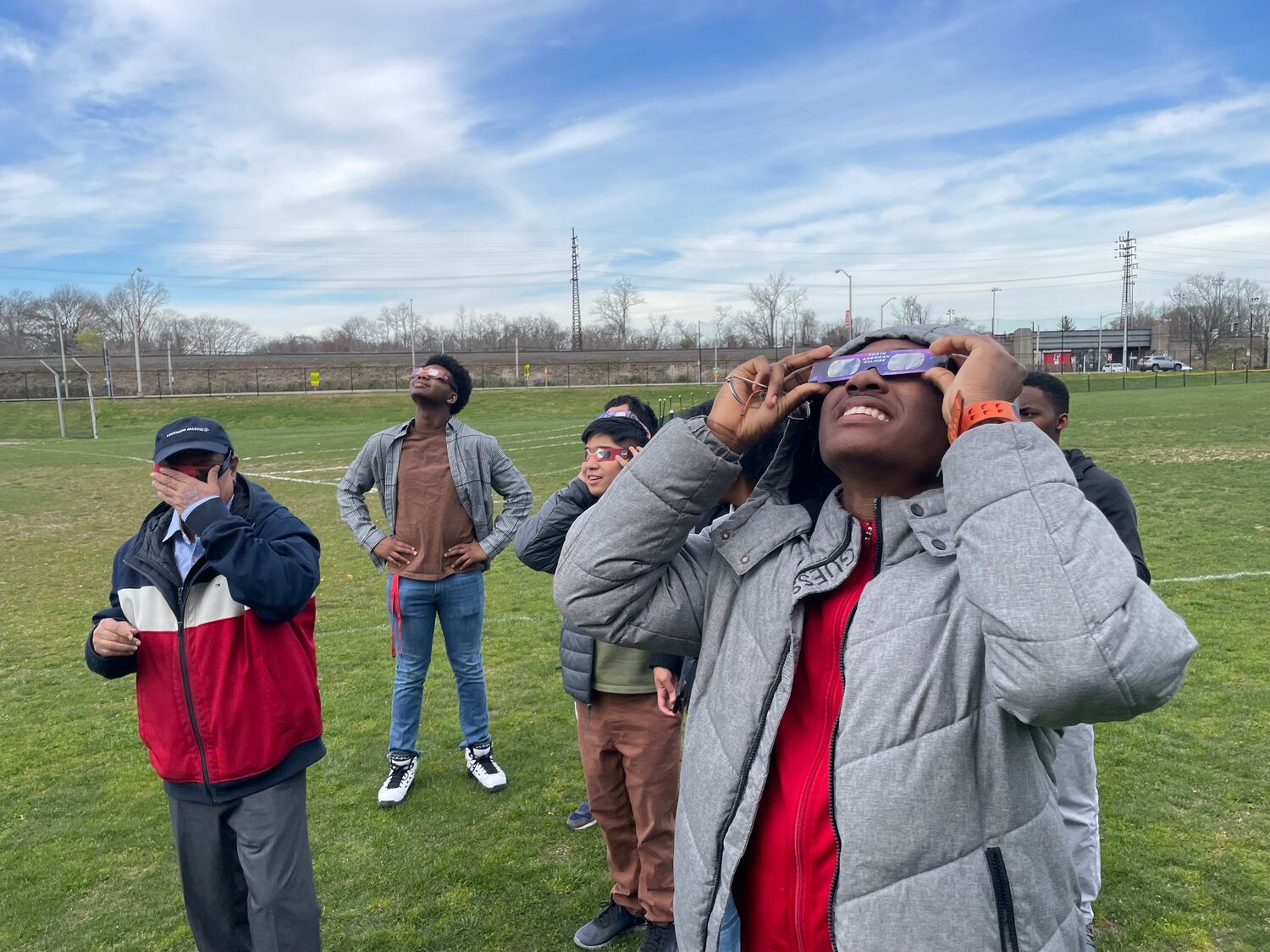Freeport H.S. students study eclipse in real time
The moon covered only about 90 percent of the sun as interested observers on Long Island viewed the April 8 solar eclipse, but that was still good enough for Freeport High School students to run a comprehensive experiment.
“Today, we’re going to measure the weather changes that occur during the eclipse,” said Ethan Patterson, a junior at the high school who was leading the experiment under the watchful eye of Freeport School District’s Director of Science, Vincent Periera.
“This has been a long time coming,” Patterson added. “Over the summer (in anticipation of the April 8 eclipse), we reached out to a lot of local colleges and schools in our area to measure these changes from across New York State. We’re expecting the temperature to go down, but we don’t understand the extent to which the wind will change.”
Periera explained that, for unknown reasons, wind direction could shift dramatically during an eclipse. Sometimes this shift in wind direction could be up 180 degrees, meaning the wind could end up blowing completely opposite to its direction at the beginning of the eclipse.
The students conducted the experiment by using two separate measuring apparatuses. Weather meters were the first to be used, as students left the school building to measure temperature, humidity and wind changes every 15 minutes.
Through the use of the weather meters students noted a roughly six-degree drop in temperature shortly before the eclipse reached maximum coverage at around 3:20 p.m.
In addition, the group also launched a high-altitude balloon at 2 p.m. in Branchville, New Jersey, as a way to gather weather data from 80,000 feet in the air. Since Freeport is in the flight paths of planes from JFK Airport, Periera’s colleague drove to Branchville when the school couldn’t get permission to launch onsite.
The balloon was launched at 2 p.m. because it takes about 90 minutes for it to reach 80,000 feet, which roughly coincided with the eclipse’s maximum coverage.
The balloon was equipped with a camera to take photographs of the eclipse, and was designed to land somewhere near Long Island’s shoreline, though that part of the experiment is not an exact science.
“It comes all the way up to Long Island, just before the Atlantic Ocean,” Periera said. “So we always cross our fingers, because if it goes in the Atlantic Ocean, it’s gone.”
The balloon could be tracked through Google Maps by inserting an SD card, and the students were able to check in on its progress across New Jersey skies.
The Freeport High School Science Research Program, under Periera’s leadership, coordinated the experiment with others, including Half Hollow Hills School District;
Webster School District in Rochester; the Museum of Science and Technology in Syracuse; Rochester University; and Dorothy Brenneis, an eclipse ambassador in the Finger Lakes region who’s taking part in a NASA initiative launched in 2022 to prepare 500 communities for 2023 and 2024’s solar eclipses.
The goal was for students to achieve a more comprehensive understanding of weather changes resulting from the eclipse across the state.
The students said they plan to compare their results with those obtained by students in Great Britain schools during their last solar eclipse in 2015.
NASA’s New York Space Grant Consortium funded Freeport High School’s experiment, and after collating the results, school officials intend to send their results to the consortium, helping to better understand the effects of the solar eclipse.

 80.0°,
Partly Cloudy
80.0°,
Partly Cloudy 




